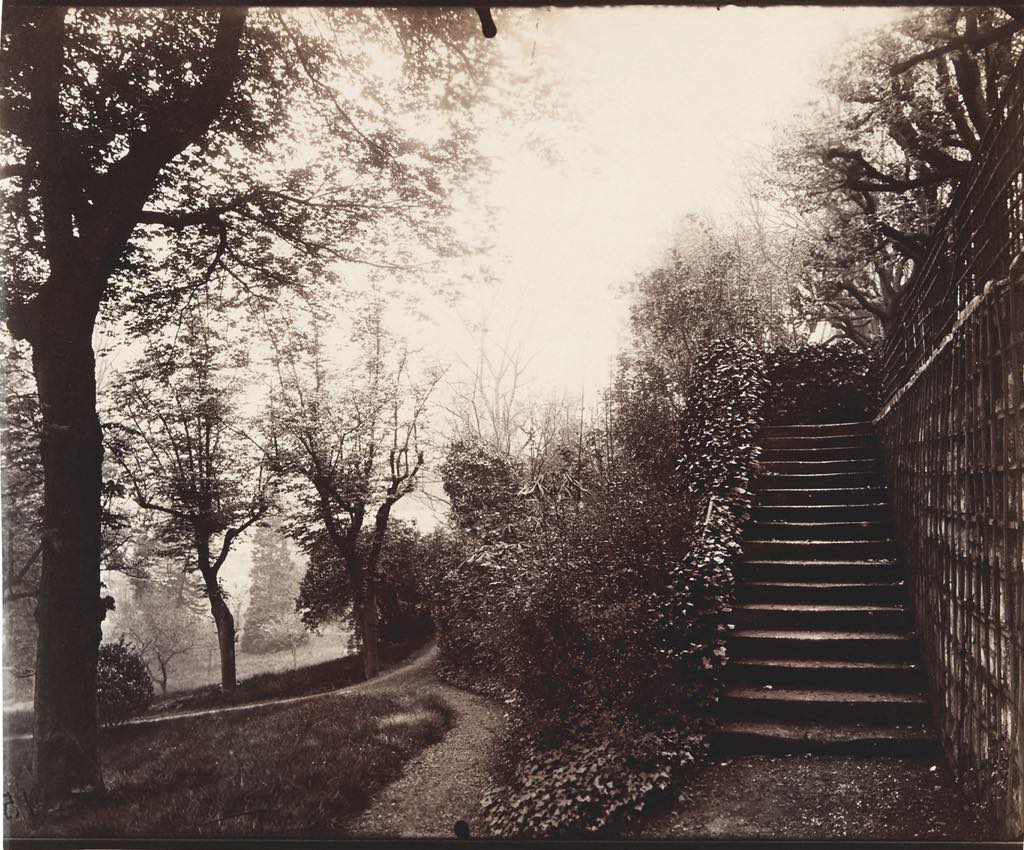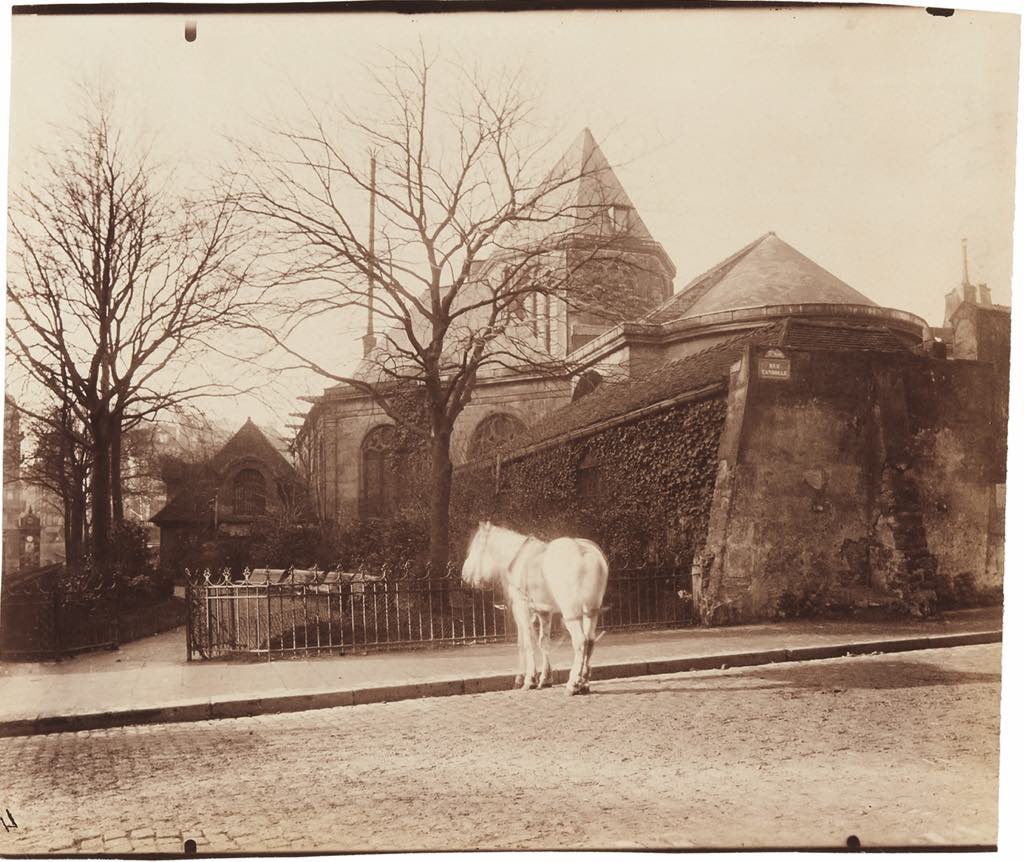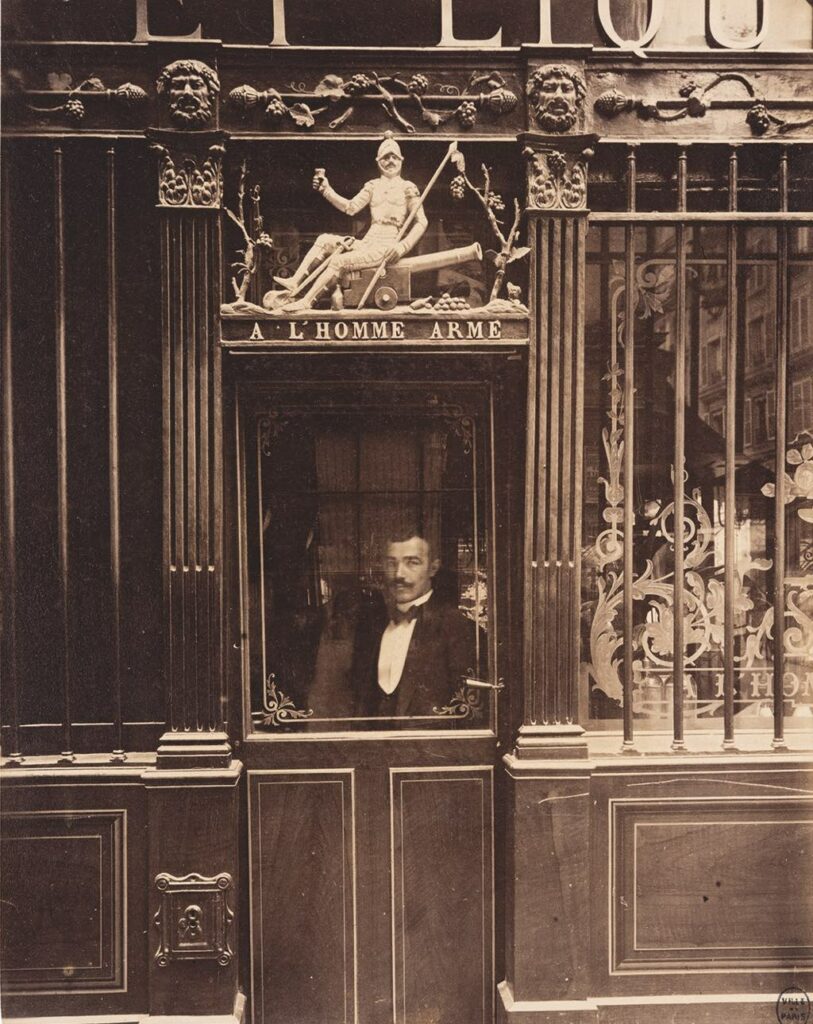
I fell in love with Eugène Atget’s photos of Paris long before I ever set foot on French soil when a friend gave me a book of his pictures many years ago. I couldn’t get enough. While I have seen many of his prints since then, I have never seen a whole exhibition devoted to him. Now the Fondation Henri Cartier-Bresson has teamed up with the recently renovated Musée Carnavalet to swap images by the two photographers for two exhibitions offering very different views of the city: “Eugène Atget: Voir Paris” at the former and “Henri Cartier-Bresson: Revoir Paris” (opens June 15) at the latter.

After giving up acting and then taking a stab at painting, Atget (1857-1927), who had grown up in Bordeaux, took up the relatively new career of photographer. Every day, he would set out early in the morning with his heavy large-format wooden bellows camera and tripod on his back and trudge through the streets, stopping when a building or a scene caught his eye. A methodical man, he made some 13 themed series documenting buildings, interiors and parks in Paris and its environs.
He peddled them separately for a few cents or gathered them into albums and sold them to artists (among them Degas, Matisse and Picasso), artisans, architects, museums and other institutions without any thoughts of glory or artistic pretension.

Near the end of his life, where he was making a good living from his work, he was “discovered” by American photographer Berenice Abbott, a protégé of Man Ray at the time, who became enamored of his work. She was pretty much singlehandedly responsible for Atget’s subsequent international fame: she bought many of his prints, wrote articles about him and published a monograph of his photos: Atget: Photographe de Paris, in 1930.
Man Ray himself felt that Atget’s very realistic photos had something surrealistic about them and published some of them in his magazine, La Révolution Surréaliste. Atget did not agree and asked that his name not appear on a cover photo, which he said was simply a document.
Abbott, who called him the “Balzac of the camera,” made portraits of Atget in her Paris studio in 1927. He looks very much a broken yet likable old man, perhaps even a derelict, with his long dark overcoat, poorly shaved whiskers and wisps of hair sticking out here and there. He died before he ever saw Abbott’s portraits, only a year after the death of his lifelong companion, Valentine Delafosse Compagnon. One wonders what he would have made of the great fame that came to him after his death.

In many of his photos, people often appear only as ghostly, often blurry (because of the long exposures required for his prints on glass plates) images standing in front of or behind the window of the building he is photographing, but the exhibition starts with numerous portraits of people from the series “Petits Métiers,” a catalog of professions of Paris, among them a harp player entertaining the children at a puppet show, the boat rental lady in her booth in the Luxembourg Garden (her successor is still there today). There are also flower sellers, rag pickers, knife grinders and peddlers of all sorts (he could have added a self-portrait here).
Probably his best-known series, begun around 1900, was “Old Paris,” which systematically depicts buildings dating from before the French Revolution. On commission from the Bibliothèque Historique de la Ville de Paris, he set out to document what was left of that world before it was completely destroyed, a process that had begun half a century before when Baron Haussmann bulldozed (so to speak) many of the city’s old houses and narrow, crooked streets and replaced them with wide boulevards and the Haussmannian buildings that characterize Paris today.
Although they were meant to serve simply as documents, these original sepia prints, all of the same size (they were contact-printed rather than enlarged), have a beauty of their own – a “poetic intuition,” as John Szarkowski, former head of the MoMA photography department, once put it – and reveal an artistic sensibility that Atget himself seems to have denied. We can only thank him for recording old Paris – much of which still exists and is recognizable to us today – and doing it with such thoroughness and grace.
Favorite